< Homepage >
Arthur Llewellyn Jones - WW1 Royal Army Medical Corps
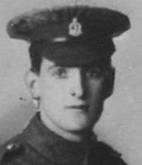
Arthur was born on 20th November 1895 in Pontycymmer. His parents were Llewellyn and
Anne Jones and he was educated at the Ffaldau School and at Bridgend County School before serving an apprenticeship with an ironmonger, DH Hopkins of Pontycymmer.
In the 1911 Census, he is recorded as 15 yrs old, living with his parents and brother Brinley (my Grandfather) at 18 Alexandra Rd Pontycymmer (where he was born). Soon after he was apprenticed to D H Hopkins, an ironmonger in Pontycymmer.
By 1914 he had moved to 14 Cromwell St, Swansea, working as an ironmongers assistant at John S. Brown Ironmongers. The shop is shown below in 1900 (http://www.swanseaheritage.net/swanseathroughtheyears/gat.asp?A_ID=61)
and would have looked very similar when Arthur was working there.
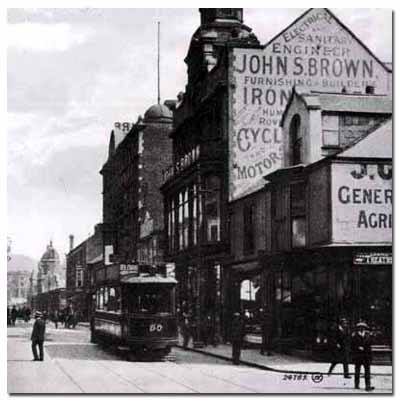
Arthur joined the army on 28th October - just over 2 months after the start of the war in France. He was "19 and 250 days" when he joined according to his army Medical, which also recorded him to be 5ft 71/2 in. tall and just over 11st in weight. He seems to have added the best part of a year to his real age. [0] (see references and notes at the end)
Arthur joined along with a 'pal' - W. L. Griffiths - and they served together until Arthur's death two and a half years later in Palestine.
The unit they joined was the 3rd Welsh Field Ambulance, part of the Royal Army Medical Corps (RAMC).
Arthur was a member of the Tabernacle Church in Pontycymmer and may have had strong religious convictions against bearing arms - hence his decision to join the Medical Corps rather than a fighting unit.
The role of the Field Ambulance unit [1]:
The Field Ambulance received men soon after they had been wounded. A wounded man would first be treated at a Regimental Aid Post (RAP), a small and often temporary position near or in the front lines. Here a Medical Officer of the RAMC, with 2 RAMC orderlies and a number of stretcher bearers (who were not RAMC men, but from units of the Division) would carry out first-aid. This might be sufficient treatment to allow the man to carry on or to enable him to pass to the next stage:
An Advanced Dressing Station (ADS) would be established by the Field Ambulance Unit typically 400-600 yards behind the front lines, ideally in a disused building or in tents, and attempt to treat the man or just do enough to ensure he could be passed back to the next point:
The Main Dressing Stations (MDS) were typically a mile further back and casualties would be carried there on horsedrawn or motorised transport. Unlike the RAP and ADS the MDS had the capacity to hold casualties for up to a week and had limited surgical capacity for life-saving operations only.
The seriously wounded would finally be passed back to a Casualty Clearing Station (CCS) situated about 15 miles behind the front lines and finally to hospitals.
The Ambulance was responsible for the Advanced and Main Dressing Stations along the casualty evacuation chain. It also provided a walking wounded collecting station, as well as various rest areas and local sick rooms.
The theoretical capacity of a Field Ambulance was 150 casualties, but in battle many would simply be overwhelmed by numbers and the ideal system outlined above would become chaotic.
When the Division that the Ambulance Unit was attached to was out of the line of combat, the Field Ambulances were allocated special tasks such as treating scabies or other ailments, running a Divisional rest centre, or as a bath unit.
A Field Ambulance Unit usually consisted of 10 officers and 224 bearers, orderlies and cooks.
Neither the officers nor the men carried weapons.
There were usually 3 Field Ambulance units allocated to each infantry Division, 1 per Brigade.
The 1st, 2nd and 3rd Welsh Field Ambulances (WFAs) were attached to the 53rd (Welsh) Division.
This Division contained the 158th Brigade (Royal Welch Fusiliers + Hereford Regiments); the 159th Brigade (Cheshire and Royal Welch Regiments) and 160th Brigade (Surrey, Sussex, Kent and Middlesex Regiments).
Various Orders of Battle [2a] show that Arthur's 3rd WFA was attached to the 158th Brigade. Arthur served with the 1/3rd WFA until 15th Mar 1916 he was attached to the 2/10th Middlesex Regiment, 160th Brigade.
The 53rd was based in Cambridge from December 1914 and at the end of April was joined by the Home County Regiments that formed the 160th Brigade. When the 53rd Division was complete in May 1915 it moved to Bedford to continue training for a few more months until the order came, on 3rd July, to refit for service in the Mediterranean.
On the 14th July Arthur would have embarked with the 3rd Welsh Field Ambulance (10 Officers, 197 Other Ranks, 10 horses and an assortment of 2 and 4 wheel vehicles) on the SS Wiltshire, one of eight transport ships waiting at Devonport to carry the 53rd Division to war.
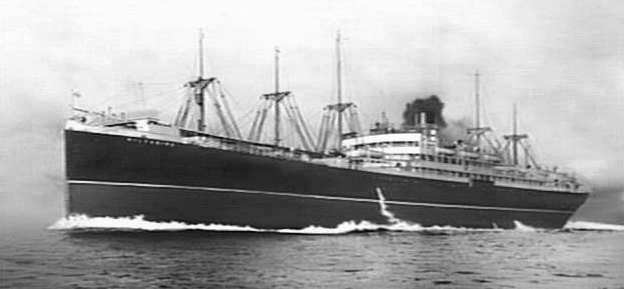
They left on 16th July and sailed down the Bay of Biscay, passing Gibraltar on 20th and stopping briefly at Malta 23rd/24th. Continuing through the Mediterranean, they reached Alexandria in Egypt on 26th July and left again on 4th August. They then sailed on to Lemnos (about 50 miles off the coast of Turkey) arriving on 6th August 1915 [2b].
The arrival at Lemnos is described by an RAMC Lieutenant on the SS Huntsgreen: "All on board rush to the portholes to find that we are approaching the Island of Lemnos. The sky to the East is a brilliant purple, and the sea a gentle calm. Submarines, destroyers and battleships pass us to and fro. Gradually we near the entrance to the Harbour when an immensity of shipping displays itself to the view. We pass the boom and slowly enter the Harbour. Our surprise is great. It is one of the finest natural Harbours in the world and full of all sorts of sea craft. The "Wiltshire" direct from Alexandria has arrived before us. We drop anchor near her. To our left is rather a large village, probably Mudros, behind which two rocky promontories rise majestically upwards.To our right is another village around which are many encampments. Some sheep graze on the land level near the sea, and a few farm houses dot the country around. As the eye wanders inland the land seems more barren, and little or no vegetation is apparent. The climate seems very equable, and a beautiful fresh breeze enervates our somewhat sluggish constitutions. We stay at anchor in harbour all day." [11] ( see Diary of an RAMC Lt - Sulva Bay )
It would now have been clear to Arthur and the rest of the soldiers that they were to see their first action against the Turks as part of the Dardanelles Campaign on the Gallipoli Peninsular.
Turkey had joined the war to fight alongside Germany. Winston Churchill (then First Lord of the Admiralty) created a plan to use the Royal Navy to force a way through the Dardanelles to attack Istanbul and link up with the Russians. The naval attack in March failed to get through the minefields and artillery, so the plan was changed to land the army on the Gallipoli Peninsular. Two landings were made on April 25th at the tip of the peninsular (Helles) by British and French forces and part-way up the west coast at what became known as Anzac Cove by Australian and New Zealand forces.
Both groups became trapped at the beach-heads, being constantly shelled by the Turks from the commanding hills.
A third landing was planned in August, further north at Sulva Bay, with the intention of providing a base and gaining control of the local hills in order to relieve the Anzac forces to the south.
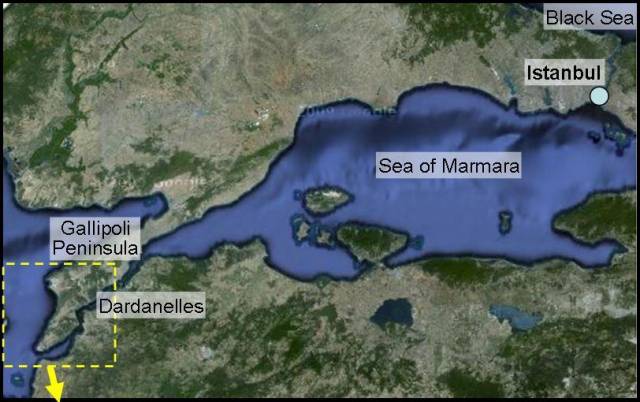
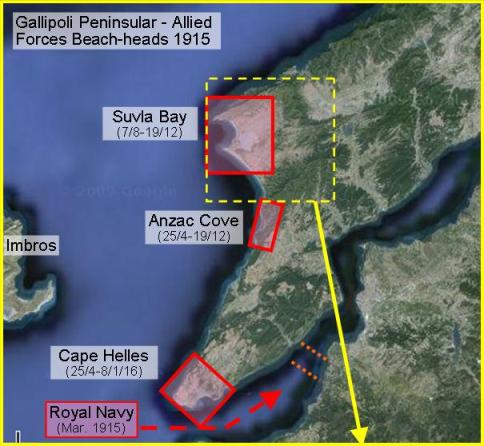
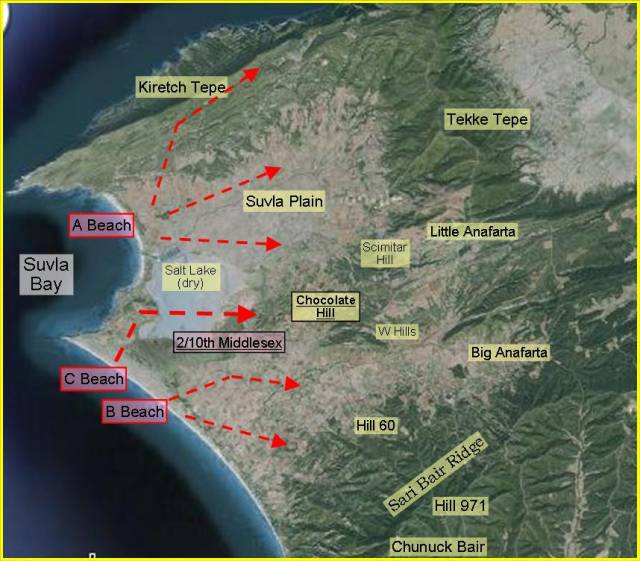

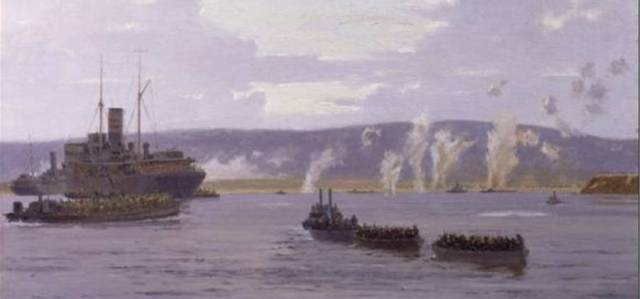 [18]
[18]
The attack on Sulva Bay was hopelessly mismanaged and the first two divisions (10th and 11th) that were landed on the 7th and 8th of August could not gain the original objectives.
An example of what it was like in the first few days is described by private John Stenson in the 11th Division [3]
"When we made the memorable landing at Suvla Bay we were packed like herrings on lighters. But, except for a few bullets whizzing and occasionally striking the boat, there was very little to get excited about. Directly after jumping ashore, we extended out with fixed bayonets, and the order was given for no man to fire. We advanced inland some distance, and I saw one poor chap shot clean through the head. We then dug ourselves in till morning and stopped there all the next day. It was afterwards stated we should have taken possession of the hills where so many lives were lost. On August 7th we advanced about a quarter of a mile with nothing doing, where we made a good trench and stayed there till next day. It was on August 9th when the next advance took place at sunrise, and I shall never forget running the wire for our last place. We were being popped at, and three of us had lucky escapes. By this time seven officers were out of action
The 53rd Division was sent in on the 8/9th August, however the Welsh Field Ambulances only began to struggle ashore over the next few days in some confusion, the 3rd (Arthur's) not landing until Wednesday 11th.
The 53rd Division was thrown into battle piecemeal across the British lines and was shattered in the fighting over the next few days suffering some 2,300 casualties (approx. 15% of the Division's manpower) [4]. The chaos and confusion of orders and counter orders, lack of maps or briefing and the linked curses of heat, thirst and exhaustion had a bad effect on all three Brigades. A quote from Dudley Ward's book sums up the state of the 53rd Division on the evening of 9th August:
"At nightfall the situation was extraordinary and confusing. General Lindley found his division scattered in all directions. Divisional headquarters was at Lala Baba; the 158th Brigade had the Herefords 'in action southeast of Lala Baba'; the 159th Brigade was inextricably mixed up with the 32nd Brigade west of Sulajik, and their exact position was unknown to Brigade Staff; the 160th Brigade had the Queens (Surrey) and Sussex in action about hill 53, the Middlesex on beach duty and the Royal West Kents still on board ship. There was no transport, the Royal Engineers and one Field Ambulance were being landed without stores and the Signals Company had not yet arrived. And the General received orders that he was to attack the next morning."
The story of the attack on Chocolate Hill by the 2/10th Middlesex (temporarily attached to 158th Brigade) was told by Major C. Jarrett, writing in the regimental journal in 1922 [5]:
"Accordingly at dawn on the 10th August, we advanced across the intervening plain. This was named on the map 'Salt Lake' but at this time of the year it was a dry plain with marshy edges. We ploughed across the stinking mud onto the hard bed of the lake and for the next thousand yards of advance there was no scrap of cover.
 [19]
[19]
The shelling was terrific, and towards the far side of the plain the Battalion came into the zone of machine-gun and rifle fire. Once among the foothills there was more chance of cover in the scrub, but the advance was much hampered by the volume of fire. Advancing up the slopes of Chocolate Hill the various companies got out of touch and near the top they became merged into a firing line made up of many units. Thenceforward anything like control by Battalion Commanders was out of the question. The hill was already a shambles, and, to add to the distress of the troops, the want of water became a very serious matter. The heat was awful and the men had used the water they carried in their bottle and no more was to be had yet.
The firing line was quite unable to push on. Isolated attempts were bravely made by officers to lead on parties of their men, but all were doomed to failure, and night came down without any progress being possible.
Perhaps the most terrible incident that evening was the fire which started in the dry bush. Many wounded men were unable to get away from the flames and their moans were heart-rending. Superhuman efforts were made to rescue some of them, and foremost in this work was our Medical Officer, Major Paull, and his orderlies."
The 2/10th Middlesex was almost spent by this battle and they were relieved a few days later and sent to help unload stores at A Beach, where they stayed for the remainder of their four months at Sulva Bay, being regularly shelled as they worked.
The 54th Division was sent in for an attack on 11th and Arthur's 3rd Welsh Field Ambulance unit was temporarily attached to this East Anglian Division from the 11th to the 18th August [6]. This unit also suffered terrible losses and the all-important hills surrounding the bay were not taken and by the end of August the situation petered out in stalemate and trench warfare as mapped below [from "A Military Atlas of the First World War", Arthur Banks, 1975, p124,125].
Arthur's 1/3rd Welsh Field Ambulance lost one of their captains during this period - Capt. Payton Tollemache Warren from Dublin was killed on 14th (aged 27) and buried at Hill 1 cemetery.
I have added the location of the 53rd Division Casualty Clearing Station near the entrance to the Salt Lake and the location of a line of Field Ambulance Dressing Stations that included Arthur's 1st/3rd Welsh (along with the 1st/1st and 1st/2nd Welsh plus the 88th F.A. of the 29th Division and the 35th F.A. of the 11th (Northern) Division. (see - Diary of an RAMC Lt - Sulva Bay )[11]
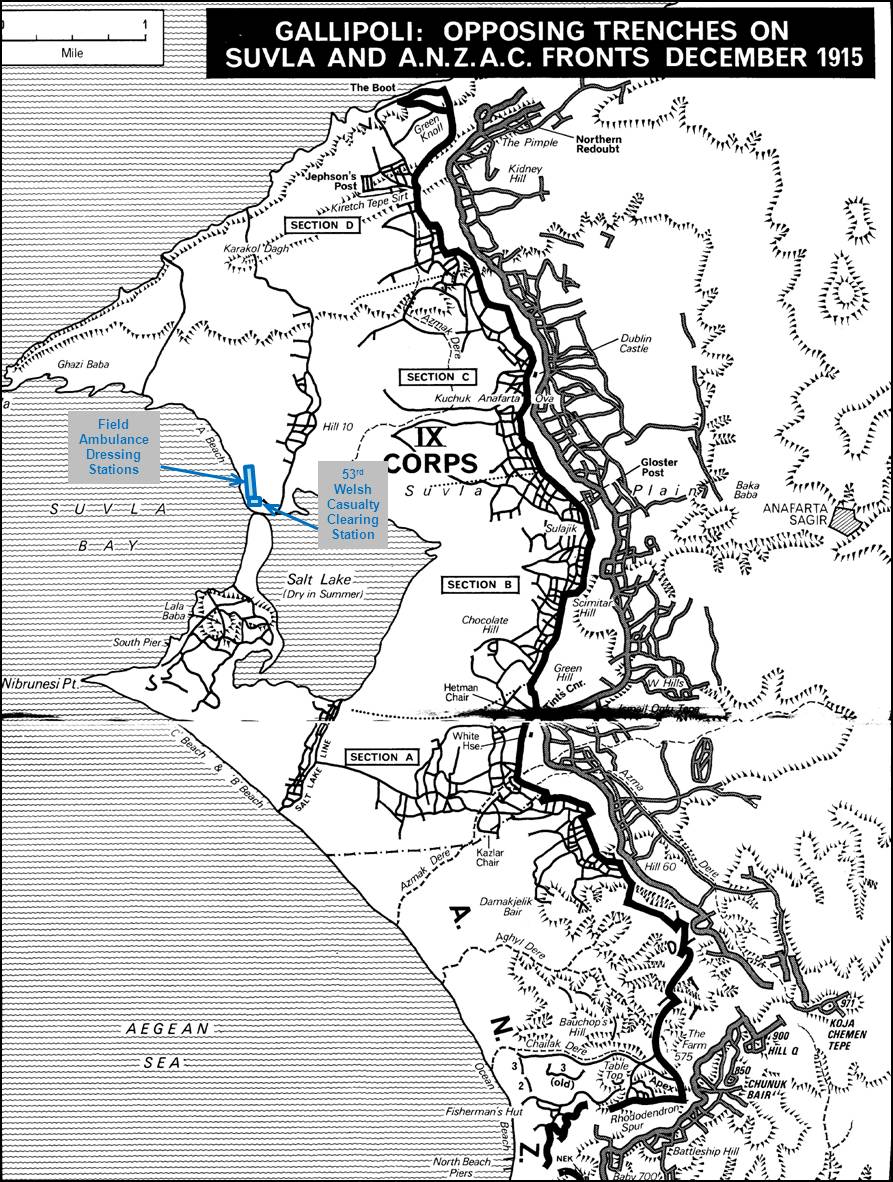
Due to the level of casualties in the stretcher bearers of the fighting units, the RAMC took on this role which was clearly very dangerous and extremely hard work, as a reporter at the time [17] illustrated with a a level of black humour in the following cartoon:
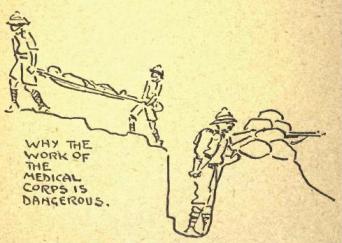
From the trenches any wounded soldiers had to be carried to field dressing stations as described by Sydney Moseley [7]. "Unlike the Western front, it was not a question of whisking the patients away from the sphere of operations to comparative safety. All the stages, slow and difficult, had to be accomplished under shell-fire."
The Advanced Dressing Stations near to the fighting were little more than semi-sheltered areas where the wounded were collected. This shows one serving Chocolate Hill (though it also seems to be next to where they stored machine guns).
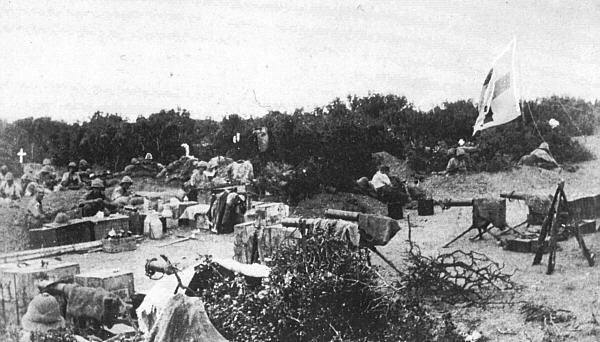 [15]
[15]
The wounded were then carried from here across the dry Salt Lake in mule-drawn ambulances as shown below.
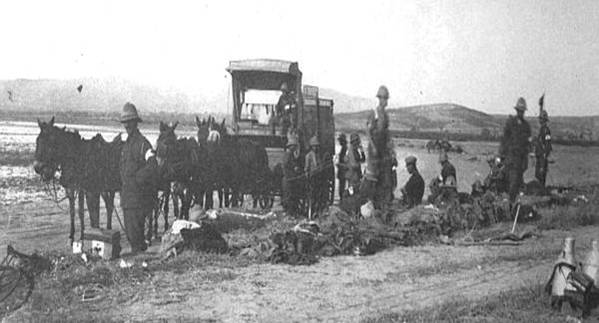 [15]
[15]
The experience of this was described in Diary of a Yeomanry MO [14]:
"On coming to, I found myself being carried face downwards on a stretcher by my own men. Suddenly another shell burst, covering us with lumps of clay; one bearer stumbled, recovered himself, and we went on. Ultimately they deposited me at Brigade Headquarters, where I was dressed. I now started on the usual journey of the wounded to the coast. They carried me to the bottom of the hill to the Second Mounted Brigade Field Ambulance, where a mule ambulance cart was standing to convey wounded to the beach. While four of us were waiting to be lifted into the cart, a shell burst and killed the two leading mules. They were cut away from the survivors, but it was an hour before new ones could be procured. Meanwhile, more wounded were accumulating in the Field Ambulance. It was the most uncomfortable hour I had ever spent, lying on one's face on a stretcher unable to move and getting stiffer and stiffer, and never knowing where the next shell would fall, as the mules were killed about ten yards from where we lay. However, we were off at last, four lying and four sitting cases, jolting over the bed of the Salt Lake. The blinds were drawn and we could see nothing, but twice a shell fell near the waggon; the good little mules plodded on and eventually brought us to the Welsh Casualty Clearing Station. Here we each received our injection of anti-tetanic serum, and after waiting about two hours were carried on to the barges."
The accommodation for the Main Dressing Stations was very basic - essentially small shelters dug into the low dunes along the beach and a few tents for the 'operating theatres'. Even these were in short supply in the early weeks of the landing and makeshift structures were put up but with very little protection from the blazing sun during the day or the bitter cold at night. Most of the casualties arriving at the dressing stations were simply lined up on the beach to wait their turn for evacuation from the pontoon jetty on towed barges out to the hospital ships waiting offshore.
Arthur must have seen the worst of the effects of the fighting in his role in the Medical Corps and something of what he experienced was described by another medic at Gallipoli, just down the coast from Suvla [8]:
"I saw as many as 200 wounded men laying in a paddock where our dressing station was: some groaning with their great pain, others died before the morning, others, again, were not suffering so much pain from their wounds, but they felt the cold. The night was bitter and the dew was falling like rain. Although we had very little time to feel the cold the poor wounded were just praying for the sun to rise, they just sat shivering waiting for attention."
The dressing stations near the beaches were grim places with tents packed full of shattered men[9].
"There were some beastly cases: a man ... shot through the stomach and yelling for morphia. Another had got it through the head and was lying still with a blood soaked bandage round his forehead., a third had got it through both cheeks and had his tongue taken off at the same time, he was coughing blood all the time and couldn’t lie down. In fact it was an eerie place, lit by two poor lamps, with a sleepy orderly sitting by a medical table at one end, and the rows of stretchers all round illuminated just enough to see the white bandages stained a dull red and not much more - which in some cases was rather a blessing."
As mentioned above, the 53rd Division Casualty Clearing Station (CCS) was located on A Beach and a painting of it was included in "The Dardanelles, (London 1916), Norman Wilkinson, p. 92[10].

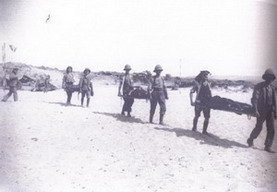
The Field Ambulance units were also subject to some shelling (though not usually directly targeted by the Turks) as described by Lieutenant Charles Nyhan of the RAMC. (His full diary for the Suvla bay period can be found here - Diary of an RAMC Lt - Sulva Bay)[11] -
"Sunday, August 22nd 1915. Beach, Bay of Suvla
A busy morning. The wounded come in very regularly, but not in such large numbers of the night before. Those today were all stretcher cases and most of them bad. We had a continuous shelling from 9.30 to11 a.m. A large number of high explosive shells were dropped amongst us, but fortunately, did very little damage. ..... We were again heavily shelled in the evening, mostly high explosives. One man was killed a little bit to our right. An R.A.M.C. chap too. Three shells landed plump in the midst of the 3rd Welsh Field Amb. and wounded a lot of men."
"Monday, August 23rd. Beach, Bay of Suvla.
The one and only consolation we have to be thankful for here is that the weather remains fine. Were it otherwise life would be miserable. The boys of the 3rd Welsh Field Amb have another shell right in the middle of them. Two patients are killed and two and Col Wilson wounded. Col Wilson is brought into us and is in great pain. His heel has been shattered"
Arthur was lucky to have survived when these shells struck his 3rd W.F.A. unit.
A few days later, however, the following diary entry was made:
"Wednesday, August 25th, Beach, Bay of Sulva.
At dusk I paid a visit to the boys of the 3rd Welsh Field Ambulance and found them all in cheery mood and very fit. The boys of the 2nd Welsh Field Amb gave a fine selection of songs as night brought her fairy shadows over the camp."
Living conditions were still grim though:
"Friday, August 27th 15. Beach, Bay of Suvla.
The fly pest is still as bad as ever. It is interesting to watch a pot of jam being put on the table. Immediately it is opened there is a struggle between the flies and ourselves as to who gets the bigger share. A large number of patients suffering with dysentery pass daily through the station"
The author of this diary was shipped off with dysentery himself a few days later.
The effects of fighting, few reinforcements and the dreadful blizzard of November along with dysentery, heatstroke, jaundice and other ailments, led to the ranks being decimated, reducing the 53rd Division to just 217 officers and 4522 men[2] (compared with 556 officers and 13,559 men who sailed from Devonport 18 weeks earlier - a reduction of about 65%!).
Possibly due to casualties or sickness in Arthur's Field Ambulance unit, on 10th December Lance Corporal Brooks was promoted to acting Sergeant and Arthur was temporarily appointed as acting Lance Corporal in his place.
Suvla was evacuated in the second week of December and on 14th December the 1/3rd WFA was shipped to Mudros (pictured below) and then transferred to the troopship SS Karroo (below right) which sailed from Mudros at 17:00 on 17th.

They arrived at Alexandria on 19th at 15:00 and this is also reflected in Arthur's war records which show that he disembarked at Alexandria on 20th December 1915 'ex Karroo'. [0]
On the 25th December Arthur reverted to being a Private.
The 53rd Division spent the next months recovering, re-equipping and re-training with 6000 fresh troops from the UK. They were based at Wardan, near the village of Beni Salama, about 25 miles North of Cairo (and the Pyramids). The 53rd posted troops to a number of different locations over the coming months but the 3rd WFA was still at Beni Salama until May when the Division was moved to the Suez Canal. The 3rd WFA stayed on the canal at Ismalia with the 158th Brigade until August when they moved to El Ferdan for the remainder of the year.
Arthur, however, did not remain with the 3rd WFA as he was attached to the 2/10th Middlesex Regiment (160th Brigade) on 15th March 1916.
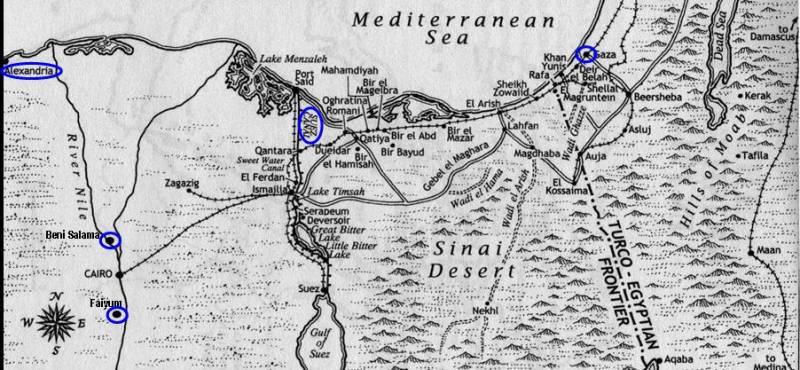 [20]
[20]
In July, after six months recovering in Egypt from the awful experiences of Sulva Bay, Arthur sent this remarkably cheery letter to his brother Brinley in June 1916 (transcribed below):
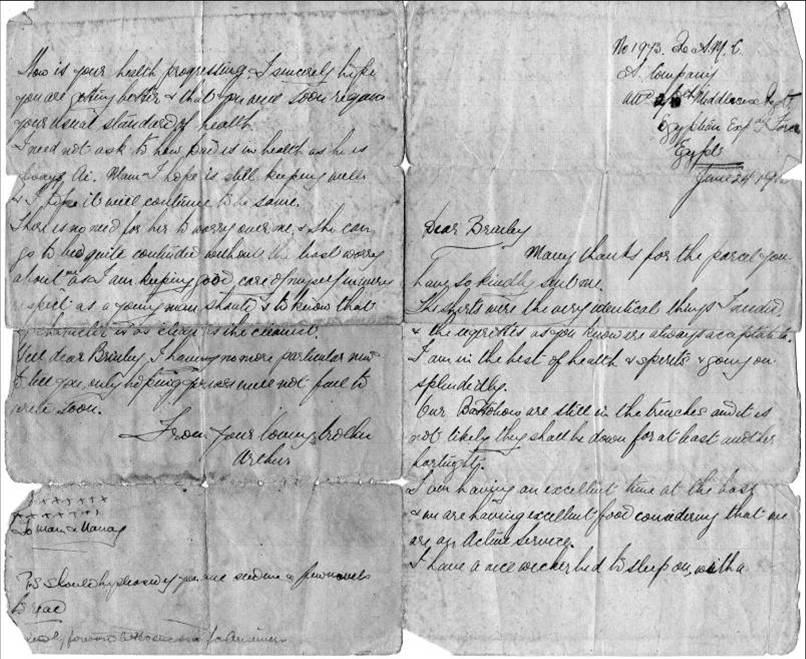
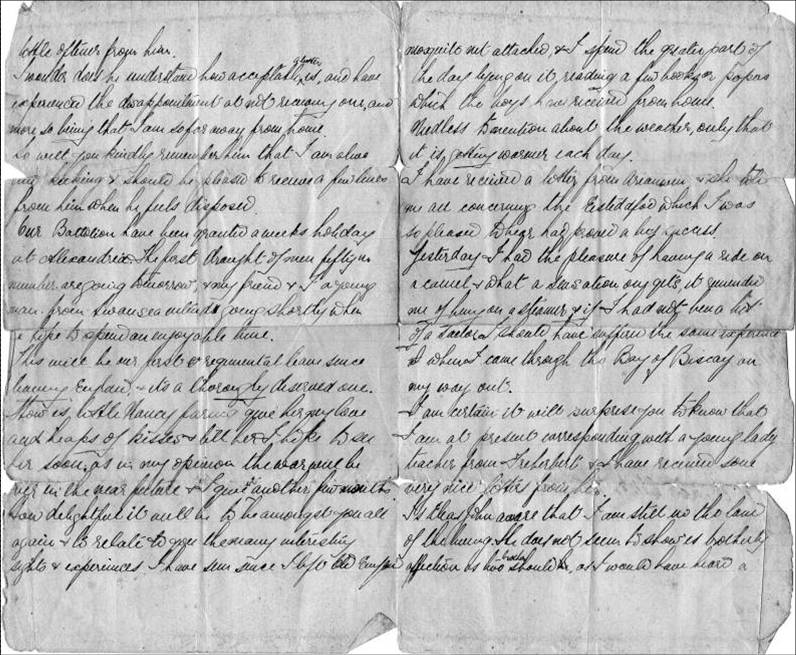
No. 1973. R.A.M.C
A. Company
Attached 2/10th Middlesex Regiment
Egyptian Expeditionary Force
Egypt
June 24th 1916
Dear Brinley,
Many thanks for the parcel you have so kindly sent me.
The shirts were the very identical things I needed, and the cigarettes as you know are always acceptable.
I am in the best of health and spirits and going on splendidly.
Our battalions are still in the trenches and it is unlikely they shall be down for at least another fortnight.
I am having an excellent time at the base and we are having excellent food considering that we are on active service.
I have a nice wicker bed to sleep on, with a mosquito net attached and I spend the greater part of the day lying on it, reading a few books or papers which the boys have received from home.
Needless to mention about the weather only that it's getting warmer each day.
I have received a letter from Arianwen and she told me all concerning the Eisteddfod which I was so pleased to hear had proved a big success.
Yesterday I had the pleasure of having a ride on a camel, and what a sensation one gets, it reminded me of being on a steamer and if I had not been a bit of a sailor, I should have suffered the same experience as when I came through the Bay of Biscay on my way out.
I am certain that it will surprise you to know that I am at present corresponding with a young lady teacher from Treherbert and I have received some very nice letters from her.
Is Elias John aware that I am still in the land of the living. He does not seem to show his brotherly affection as two brothers should, as I would have heard a little oftener from him.
I wonder does he understand how acceptable a letter is, and have experienced the disappointment at not receiving one and more so being that I am so far away from home.
So will you kindly remind him that I am alive and kicking and should be pleased to receive a few lines from him when he feels disposed.
Our Battalion have been granted a week’s holiday at Alexandria. The first draught of men, fifty in number, are going tomorrow & my friend and I a young man from Swansea intend going shortly when we hope to spend an enjoyable time.
This will be our first Regimental leave since leaving England and it’s a thoroughly deserved one.
How is little Nancy faring? Give her my love and heaps of kisses and tell her I hope to see her soon, as in my opinion, the war will be over in the near future and I give it another few months. How delightful it will be to be amongst you all again and to relate to you the many interesting sights and experiences I have seen since I left Old England.
How is your health progressing, I sincerely hope you are getting better and that you will soon regain your usual standard of health.
I need not ask how Dad is in health as he is always ok, Mam I hope is still keeping well and I hope it will continue to be same.
There is no need for her to worry over me and she can go to bed quite contented without the least worry about me as I am keeping good care of myself in every aspect as a young man should and to know that my character is as clean as the cleanest.
Well dear Brinley I have no more particular news to give you, only hoping Elias John will not fail to write soon.
From your loving brother,
Arthur
x x x x x x x x x x x x to Mam and Nancy
P.S. should be pleased if you …. a few novels to spare
Kindly forward letter enclosed for Arianwen
My grandfather (Brinley) had kept this letter safe in a wallet for nearly 70 years until it was found after his death by my cousin.
The experience of riding a camel may have been useful as Arthur's unit was equipped with 233 camels (and 94 mules) in preparation for accompanying the similarly equipped 160th Brigade (including the 2/10 Middlesex) in the march east across the desert through the Sinai towards Palestine [2]. They started from the Suez Canal in November 1916 and behind them the Royal Engineers built a water pipeline and railway line along the coast. At Christmas the 2/10 Middlesex were at Mazar on guard duty and training and the pipeline had progressed to Al Arish. Within a few months Sinai was under British control and by March 1917 the railway and pipeline had reached Rafah and an attack on Gaza was being planned.
Arthur's 53rd Division was to lead the attack which began on 26th March. The mounted troops started their deployment at 2.30am, making their way across the dry bed of the Wadi Ghazze and advancing to the east of the town to protect the infantry from attack by Turkish reinforcements. In fact by 10.30am the Australian mounted units had virtually surrounded the town.
The 53rd also managed to cross the Wadi and get to within 3 miles of the Turkish positions on Ali el Muntar by 8.00am before the Turks were even aware of the impending attack. There was then a significant delay to mid-day before the fighting advance began, with the 2/10th Middlesex attacking the 'Labyrinth' south of the town (see map below showing surrounding area).
Their objective was a maze of small fields separated by dense cactus hedges and progress was slow as they were fighting uphill, exposed to the sun and being shot at by Turkish machine guns and snipers. As at Suvla the troops suffered from a lack of adequate water.
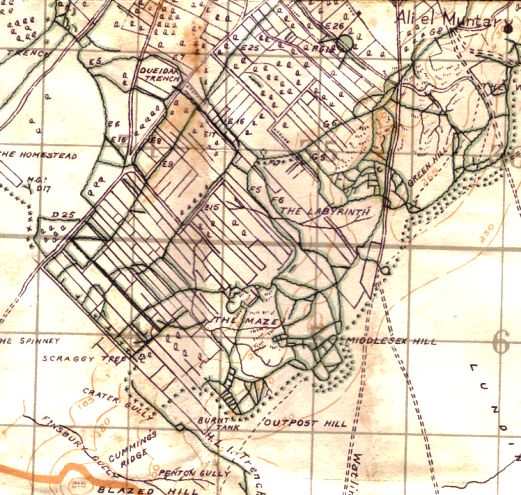
Nevertheless, the 2/10th Middlesex 'die-hards' (supported by the Sussex on their right attacking Ali el Muntar) managed to take their objectives by the afternoon.
By 7.00pm the Officer commanding the Middlesex reported back that he urgently needed more ammunition and water and unless reinforced his position would become untenable, but he was ordered to consolidate the position won.
Unfortunately the primitive communications of those days meant that General Dobell was not aware of how much territory had already been gained, and believing that a Turkish relief force had almost reached Gaza, he ordered a general withdrawal.
All the hard fought ground was given up, even though, unknown to the British, the Turkish garrison of Gaza was virtually on the point of surrender, and the relief forces had been stopped by their commander who assumed the town was already effectively in British hands.
The 53rd Division fell back as ordered and continued their fighting retreat the next day until, by the 28th March, the Middlesex had crossed back across the Wadi Ghazze to Sheikh Reshid.
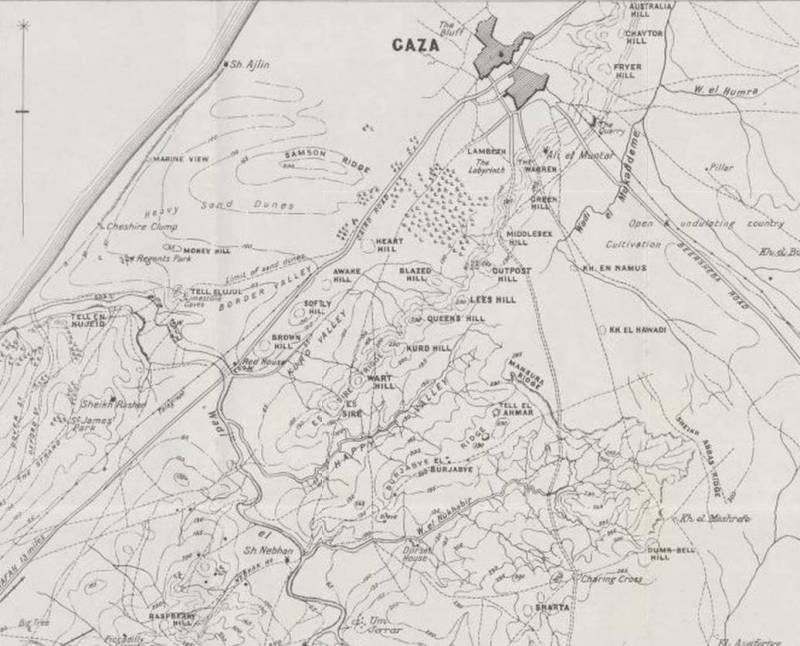
Presumably the RAMC Field Ambulance would have been fully involved in support of this operation and Arthur's unit would have had to deal with the many casualties that the 2/10th Middlesex suffered. They lost 4 officers and 14 other ranks killed plus 5 officers and 108 other ranks wounded. A further 26 were declared missing in action.
Unfortunately, General Murray (in overall command of army in Palestine) had sent a very positive report about this failed battle and it encouraged the War Cabinet in London to demand a quick advance through Palestine to capture Jerusalem. Murray requested additional forces but was told to advance immediately, so just three weeks later the second battle for Gaza took place.
The Turks had quickly reinforced their positions around Gaza and east towards Beersheba (to avoid a flanking attack). Additional regiments had been brought in and their troop's moral was improved by their recent victory.
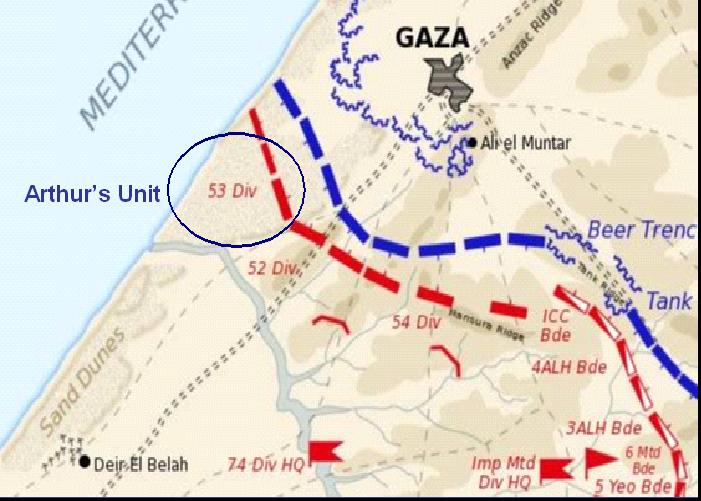
Against this General Dobell decided on a conventional frontal attack (as used on the Western Front) supported by 170 artillery pieces, a limited number of tanks and by the use of naval guns firing from monitors offshore. This was also the first (and last) time that poison gas was used in this theatre. Three divisions were to be used in this attack (rather than just the one, Arthur's 53rd, that was used in the first battle).
The 52nd and 54th were to attack from the south up the ridges leading to Ali Muntar again. The mounted units of the desert column would occupy the Turkish forces to the east of the town, while the 53rd would this time advance through the sand dunes up the coast.
The 54th and 52nd began their moves on the 17th April, successfully crossing the Wadi Ghazze and establishing their positions for the main attack on the 19th, which commenced at 5.30am with a bombardment. By 7.15 the 53rd had started their advance up the coast and soon after the 54th and 52nd began their attacks. [5]
The 2/10th Middlesex advanced towards Sampson's Ridge alongside other battalions of the 160th Brigade of the 53rd Div. Their advance was slowed by machine gun fire from Turkish held woods to their east, but this was eased by the 1/4th Sussex who reinforced their right flank. At 1.00 there was a bayonet charge which took the ridge and captured 43 Turkish soldiers and 2 officers. The Middlesex then consolidated their position with a gap on their right being filled by the 1st Herefords. On their left, the 159th Brigade pushed forward to just north of Sheikh Ajlin (see large map above).
By the afternoon of the 20th April the 2/10th Middlesex were relieved and moved back to the shore just north of Wadi Ghazze. Their losses were 2 officers killed and 7 wounded plus 27 other ranks were killed; 8 more died of their wounds; 6 were missing and 132 were wounded. Arthur would again have been busy tending to these casualties.
The attacks by the 54th and 52nd Divisions were not successful due to the effective defence by the Turkish forces and the lack of adequate supplies of artillery shells. The final line occupied by the British ran from Sheikh Ajlin south east through Sampsons Ridge, Heart Hill and Lees Hill to Sheikh Abbas Ridge and the inevitable trench warfare set in until the third (successful) attack on Gaza took place in late October / early November.
The 160th Brigade dug in on Sampson's Ridge, building the sort of dugouts shown here.
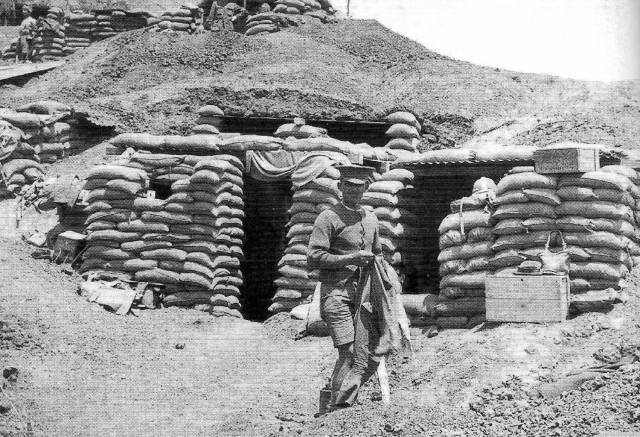
Sadly, Arthur was killed on 7th May 1917 by a Turkish shell landing directly on his dugout, located on the western end of Sampsons Ridge. This was just hours before the 2/10th were relieved on the night of 7th/8th August. [21]
Whether Arthur would have gone back with them I'm not sure, but it is doubly sad to think that Arthur may have been safely away from the front line that night.
Arthur's death was recorded below in this extract from the Glamorgan Gazette for 15th June 1917:
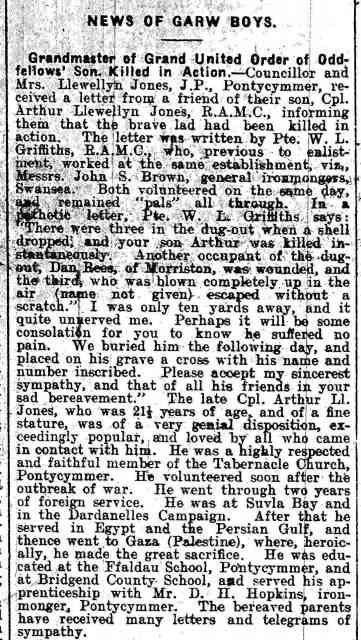
The 'Dan Rees of Morriston' referred to in the article also sadly died (in hospital in Port Said five weeks after the shelling) due to severe wounds in his left leg and arm that led to septicaemia. (He was in the 2/3rd W.F.A. [service no. 2103/368241] and had sailed from Devonport back in June 1915 on the SS Huntsgreen with the 2/10 Middlesex to serve at Suvla and then Egypt and Palestine).
Arthur was moved from his temporary grave near Sampsons Ridge and finally laid to rest in the Gaza Commonwealth War Graves Cemetery, situated in the Gaza Strip.
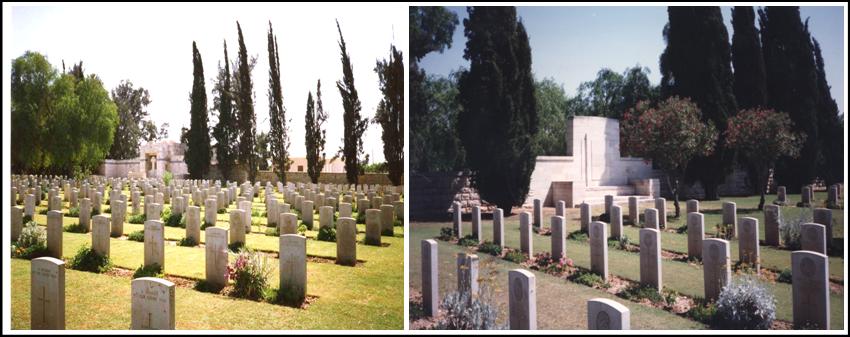
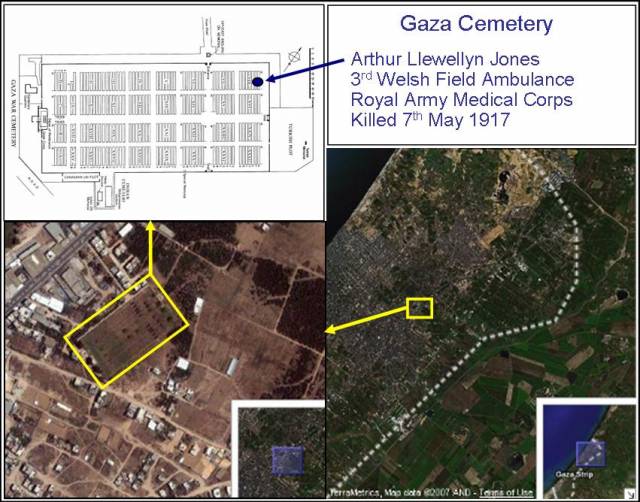
This is Arthur's medal card with explanations of the various notes on the card and pictures of the medals added. Arthur's father Llewellyn Jones accepted these on his son's behalf in 1922.
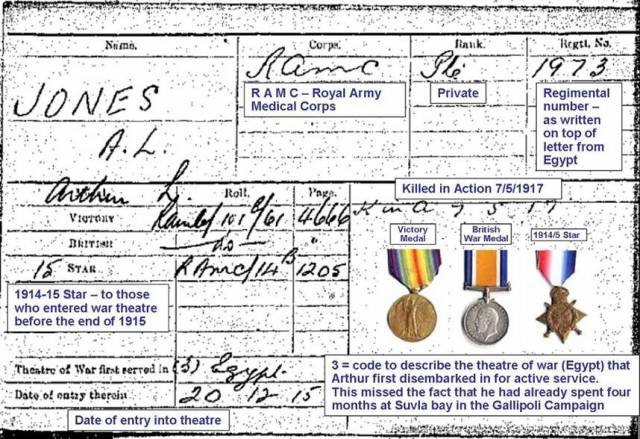
A moving poem about the RAMC can be found at: http://www.ramc-ww1.com/ramc_in_war.php in a box lower down the page.
Sources:
[0] Arthur's war records survived and were found via www.ancestry.co.uk - < Here are the scanned original documents >
[1] Main site for the RAMC - http://www.ramc-ww1.com/chain_of_evacuation.php?osCsid=29
[2a] History of the 53rd (Welsh) Division, 1914-1918, Major C. H. Dudley Ward, Naval & Military Press.
[2b] From a discussion forum item on Great War Forum by Richard Hart: http://1914-1918.invisionzone.com/forums/index.php?showtopic=67159&st=0&p=595982&hl=+welsh%20+field%20+ambulance&fromsearch=1&#entry595982
[3] http://www.facebook.com/topic.php?uid=180766336685&topic=41148
[4] http://1914-1918.invisionzone.com/forums/index.php?showtopic=82431&pid=769856&mode=threaded&start
[5] "Die Hards in the Great War" (A history of the Middlesex Regiment) by Everard Wyrall, 1926, Vol.1, p188
[6] http://www.1914-1918.net/53div.htm
[7] The Truth About the Dardanelles by Sydney A. Moseley, 1916
[8] http://www.facebook.com/topic.php?uid=180766336685&topic=41148
[9] http://www.iwm.org.uk/upload/package/2/gallipoli/pdf_files/MedEvac.pdf
[10] http://www.gallipoli.com.tr/gallipoli_battlefields_relics.htm
[11] http://www.arrse.co.uk/military-history-militaria/138912-diary-ramc-lt-suvla-bay-1915-a.html
[12] Original map of Gaza 1917:http://nla.gov.au/nla.map-rm2421-13-e-cd
[13] http://www.gallipoli.com.tr/
[14] "The Diary of a Yeoman M.O.", Capt. O. Teichman, DSO, MC, RAMC, p24. http://www.archive.org/details/diaryofyeomanrym00teicrich
[15] Pictures of units on Scimitar Hill http://www.keepmilitarymuseum.org/gallipoli/gallery.php?&id=103034&sid=&frompage=scimitar.php%3F
[16] Discussion of Field Ambulances at Suvla http://1914-1918.invisionzone.com/forums/index.php?showtopic=157421
[17] At Suvla Bay by John Hargrave http://www.gutenberg.org/ebooks/3306
[18] The landing at Suvla Bay, early morning 7th August http://www.bbc.co.uk/arts/yourpaintings/paintings/the-landing-in-suvla-bay-early-morning-7-august-1915-6451
[19] Imperial War Museum site. Depicts advance on 21st August, but it must have looked very similar on the 10th. http://www.iwm.org.uk/collections/item/object/38060
[20] Map from "The Last Crusade, The Palestine Campaign in the First World War" by Anthony Bruce, published 2002 John Murray.
[21] Detail from the 2/10th War Diary kindly provided via correspondence with Alastair Massie, National Army Museum







 [18]
[18] [19]
[19]

 [15]
[15] [15]
[15]












